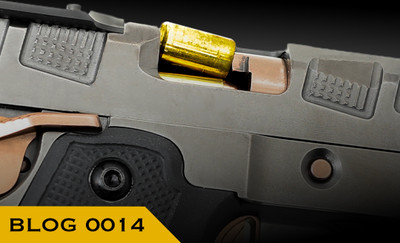


If it was built by man, it can fail. Some failures occur more often than others. Regardless of the reasoning behind the failure. The point is to have a plan to quickly and efficiently clear the malfunction and return to fighting. Regular practice and maintenance are the keys to minimizing the occurrence and downtime. Clearing malfunctions in an M1911 handgun involves understanding common issues and applying appropriate techniques to resolve them.
There are several types of malfunctions, and a malfunction is nothing more than a stoppage to the cycle of operation. If you understand the cycle of operation, you can solve the problem more quickly. The three most common are the failure to fire, failure to feed, and failure to extract. The failure to fire happens when the chambered round fails to fire, or there is no round chambered. This could be caused by failing to properly load the round, the magazine not being properly seated, or operator error. It could also be caused by failing to disengage any mechanical safeties. More likely it was caused by a bad round, or a dud. It is recognized by the mechanical click of the hammer falling or striker being released. Some call this the loudest sound in a gunfight, but no matter it is solvable.
The next common stoppage is a failure to feed. In this case, the round is caught on the feed ramp and fails to chamber properly. This could be caused by a dry or dirty feed ramp, weak or broken magazine springs, and improper ammunition usage. It is recognized with a dead or mushy trigger. Upon visual inspection, you see the slide is partially open and the top round stuck on the feed ramp. The third common stoppage is a failure to eject. In this case, the spent casing doesn’t fully exit the ejection port. This could be caused by a worn or broken ejector, a dirty chamber, or improper ammunition usage. It is recognized by a dead or mushy trigger. Upon visual inspection, you see the spent casing stuck between the barrel and slide.
Regardless of the type of malfunction, the remedy for all three is the same. The fundamental method used to remedy the stoppage is an Immediate Action Drill or “tap, rack & assess”. This remedy has several different actions. It starts by recognizing the stoppage. While keeping the muzzle in a safe direction and the trigger finger straight on the home position, you tap the base of the magazine to ensure it is properly seated. Rack the action to chamber a new round and or eject a partial round, then assess the situation to determine if returning fire is necessary.
The best suggestion is preventive measures and practice. Regular cleaning and lubrication, especially after firing 500 rounds, can prevent many malfunctions. Routine inspections and timely replacement of worn parts are highly recommended. Using clean and proper ammunition is the final recommendation. Setting up these malfunctions in training with inert rounds is a great way to practice ensuring the highest level of readiness. The key takeaway is not necessarily knowing why the stoppage happened, but knowing how to remedy the stoppage and get back to fighting.